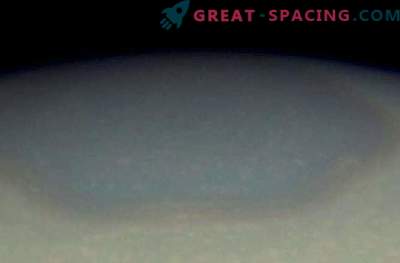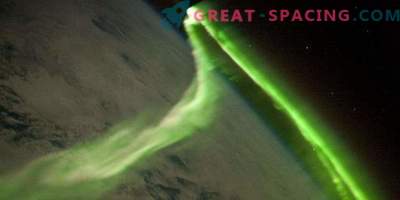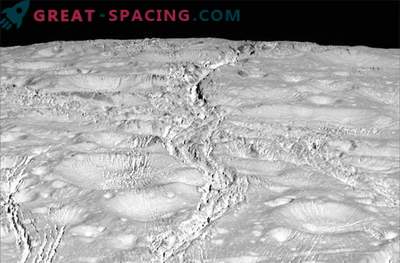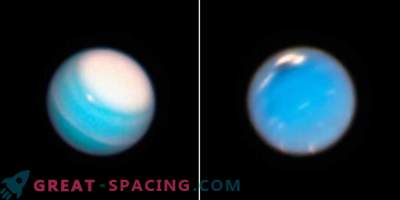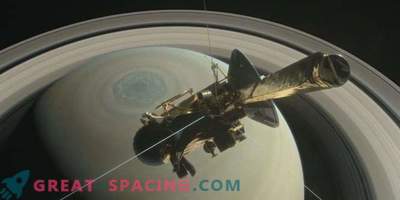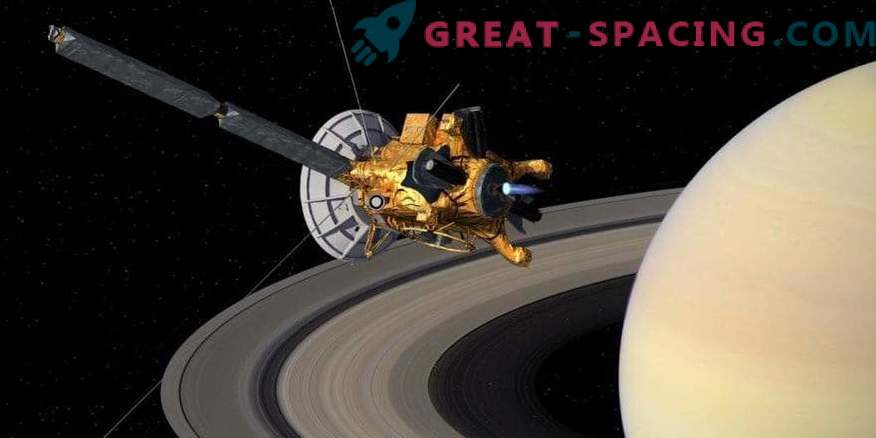
Researchers are eyeing seasonal changes at the north and south poles of Saturn, watching how aerosols increase and decrease in the planet's atmosphere.
Time is running out, and the mission of Cassini comes to an end. After more than 10 years of studying Saturn and its satellites, the spacecraft enters the last stage of operation, after which it swoops onto the planet and crashes in September 2017. There is little fuel left, so there is a risk that the device could collide with the icy moon.
One of the research objectives was to track the slow changes in the seasons. Saturn bypasses Sun in 29 years. Cassini has been there for almost half a year, that is, 14.5 Earth years. Different parts of the planet are better illuminated depending on their location to the Sun, demonstrating the nature of the poles and the changing seasons.
These poles became the center of discussion in a new article in Icarus magazine, in which they compared the northern and southern polar eddies. Massive violent storms around the poles of the planet resemble the Great Red Spot of Jupiter, but not so powerful.
“The North Pole showed much clearer details, but the South Pole looked unclear at all,” said Kunio Sayanagi, an assistant professor at Hampton University (Virginia), who led the study. Sayanagi attributed the differences to seasonal fluctuations at the poles.
“We analyzed the data from the polar since the end of 2012, which was mostly in early spring, but the southern one - in 2007, towards the end of autumn,” he said. “Between the equinoxes in 1995 and 2009, the north pole did not receive any sunlight, since there came a long polar night. But the southern one was constantly baked under the rays. ”
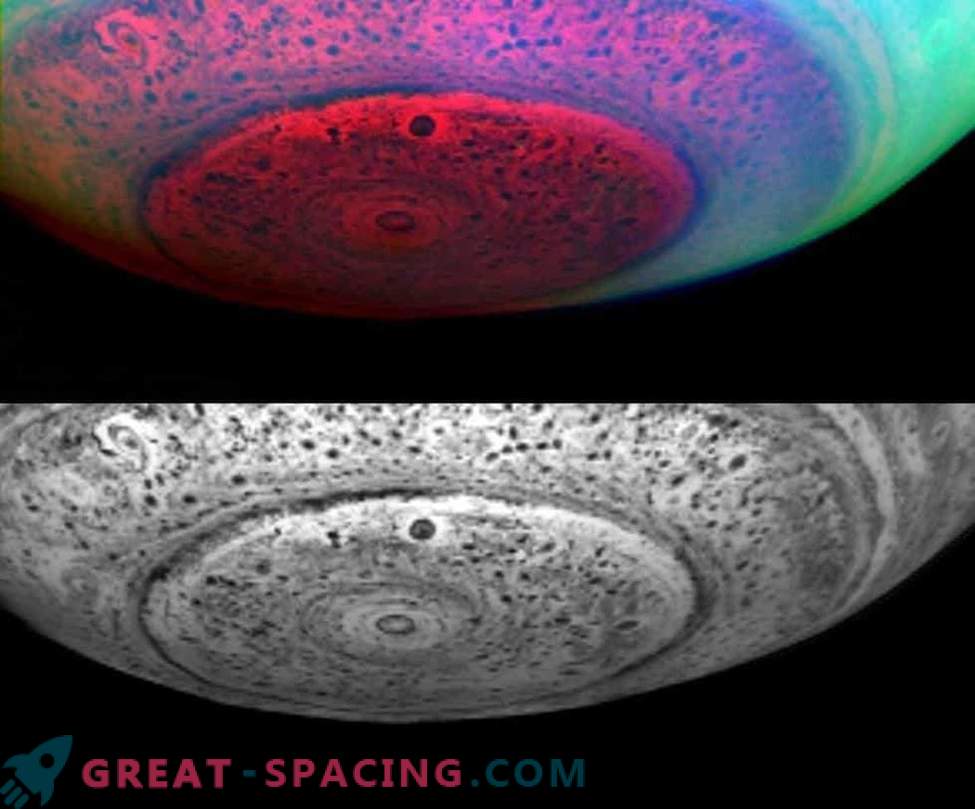
The 2007 South Pole of Saturn is shown in two images taken by the Cassini spacecraft. The top is in a false color, but the bottom is in the near infrared wavelength.
At the north pole, the sky is still clear, because smog is still forming. This allows scientists to observe the process in detail, at least as long as it can accumulate.
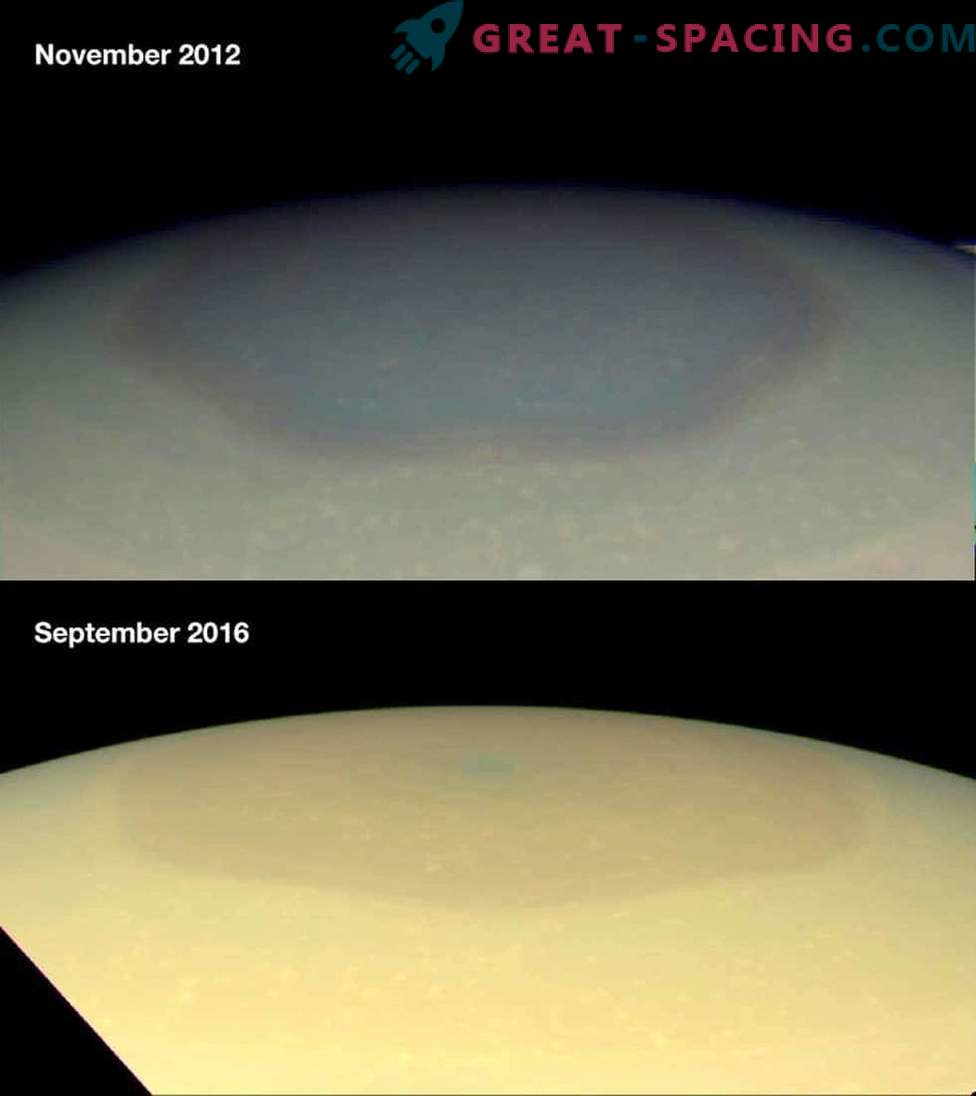
Of course, Cassini will not have time to capture the whole process of accumulating smog in his life, but in the coming months there may be visible changes.
“If we anticipated the scenario, then this season we will be able to observe a layer of aerosols,” said Sayanaga, pointing out some transformations that appeared at the end of 2016. - “Cassini will continue to accept data until the end of his mission. Hope we get a great view of the poles. ”

